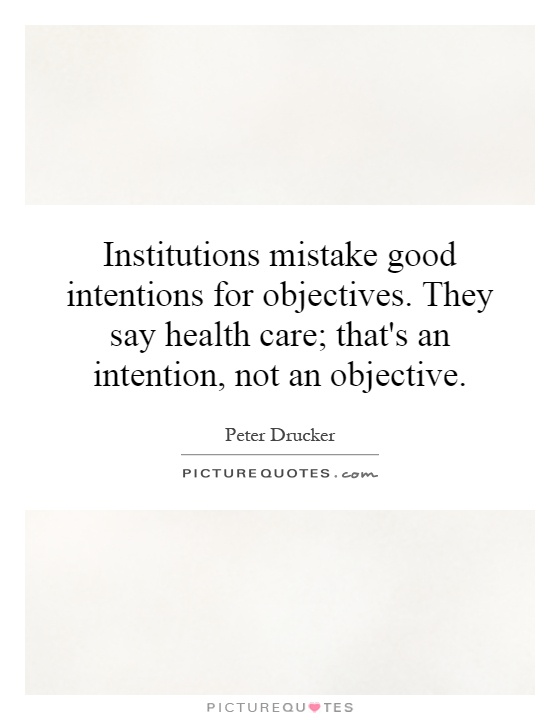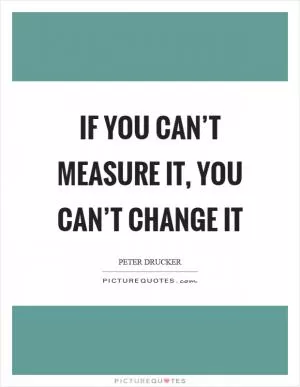Institutions mistake good intentions for objectives. They say health care; that's an intention, not an objective

Institutions mistake good intentions for objectives. They say health care; that's an intention, not an objective
Peter Drucker, a renowned management consultant and author, once famously said, “Institutions mistake good intentions for objectives. They say health care; that's an intention, not an objective.” This statement highlights a common pitfall that many organizations fall into when setting goals and objectives. It emphasizes the importance of clearly defining objectives rather than simply stating intentions.When it comes to healthcare institutions, the distinction between intentions and objectives is crucial. While providing healthcare is undoubtedly a noble intention, it is not a specific and measurable objective. In order to effectively manage and improve healthcare services, institutions must set clear and actionable objectives that align with their overall mission and goals.
For example, a healthcare institution may have the intention of improving patient outcomes. However, this intention must be translated into specific objectives such as reducing readmission rates, increasing patient satisfaction scores, or improving clinical outcomes for specific conditions. By setting measurable objectives, institutions can track their progress, identify areas for improvement, and ultimately achieve better results for their patients.
Drucker’s statement also highlights the importance of strategic planning and goal setting in organizations. Intentions alone are not enough to drive success; they must be translated into concrete objectives that can be effectively implemented and measured. Without clear objectives, organizations risk drifting aimlessly and failing to achieve meaningful results.












 Friendship Quotes
Friendship Quotes Love Quotes
Love Quotes Life Quotes
Life Quotes Funny Quotes
Funny Quotes Motivational Quotes
Motivational Quotes Inspirational Quotes
Inspirational Quotes